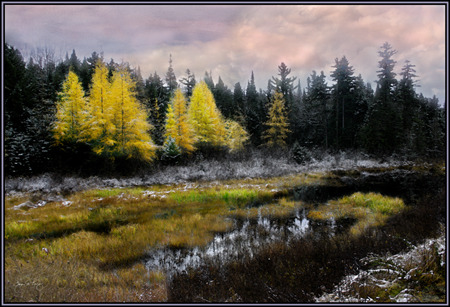Phoenix Project Aims at Cleanup and Job Creation in Niger Delta
Creating Multiple Positive Outcomes from Spill Cleanup
Brief:
The Phoenix Project proposes to create a pilot "Enterprise Recovery and Empowerment Zone" in the Niger Delta of Nigeria to test an innovative approach to oil spill cleanup that includes creation of an enterprise community generating electricity, jobs and research opportunities for the people of the region.
You’ve probably seen the photos of the devastation in the Niger Delta. They were likely a sidebar story to coverage of the Gulf Oil Spill. As cleanup commenced here in the US within days of the accident, an equal amount of oil was being spilled in West Africa’s most fertile valley and richest fisheries and little was being done by anyone. Further, on an annual basis the Delta has experienced spills equivalent to two Gulf spills every single year.
Oil Companies find the inconspicuous nature of drilling and harvesting oil in Africa an attractive alternative to doing so in the West where consumers are more organized and unforgiving. Many of the local Nigerian politicians find that oil money makes a very tempting and large target for illicit proclivities. Add to all this a spill cleanup funding mechanism that suffers from a complete lack of transparency, further tempting even aspiring “honest” politicians and distancing oil companies from the assumption of responsibility and you have a recipe for an amoeba-like environmental catastrophe - growing and spreading as it devastates the economic and social fabric of the region.
Enter Project Phoenix, the conceptual brainchild of former NH Senator Wayne King of with the help of his Nigerian counterpart Osita Aniemeka. King began going to Nigeria in 1997, shortly after an unsuccessful run for Governor, Leading a team of social entrepreneurs on behalf of the Ford Foundation, King’s team, which included Santa Barbara-based Philip “Kip” Bates of the University of California, Santa Barbara who was the technology guru of the Team. Rounding out the team was the late Dr. Chidi Nwachukwu a native born Nigerian and US Citizen and CEO of Sameday Express and a unique startup called UConnet that was one of the nation’s very first companies to use the Internet for telephone services, now referred to as “Internet Telephony”. Since 1997 the team has continued to return to West Africa for Ford Foundation, USAID and the World Bank among others. Dr. Nwachukwu died from Leukemia in 2000, when the idea for doing something about oil spills in the Niger Delta was little more than a glimmer in the eyes of the trio, and the team has dedicated this pilot project in his honor.
The Phoenix Project officially has been in the works for more than four years when King got the idea that it might be possible to build an “Enterprise Community” around the oil spill cleanup process where the cleanup and associated funds - if they could be accessed - would drive the development of both cleanup jobs as well as jobs related to the bi-products of the cleanup, specifically electricity, biochar, and biofuels. The more the team began to explore and research the components they envisioned the mmore they came to realize that there may be a way to make the effort sustainable, replicable and taken as a whole - carbon-negative. The Kyoto accords, that took effect in 2005, also spurred the idea that there might also be an opportunity for Carbon Credit trading based on the Carbon-Negative
In most circumstances today the end results of an oil spill cleanup are hidden from the public, quite possibly because the companies want the problem and its accompanying bad publicity to simply go away. “This means” said King, “that the opportunities to generate revenues from the cleanup of the oil and the treatment of the oil contaminated absorbents - like booms - go unnoticed and and untapped. Our pilot project recovers and recycles as much of the oil as we can, using a patented cellulose absorbent from MOP Environmental Solutions for the cleanup on both land and water (MOPenvironmental.com) then using the remaining biomass (the cellulose after oil removal) to generate electricity with a small, mobile, pyrolysis power plant manufactured by EcoReps of Adelaide Australia (www.Ecoreps.com.au). In addition to the electricity, the plant will also produce biochar a highly acclaimed soil amendment that has properties that make it both a fertilizer, a water storage element and a carbon sink - capturing carbon dioxide from the atmosphere and sequestering it for decades and perhaps centuries, releasing it only when called on for plant growth.”
In addition to the jobs and opportunities created by the obvious products and processes The Phoenix Project - Niger Delta expects to seek out additional research and entrepreneurial opportunities that coincide with, and take advantage of, synergies that arise within the process. For example, research on biochar is at its very early stages and the use of it for bioremediation of oil spills is postulated but not thoroughly researched. Osita Aniemeka, Director of Nigerian operations, believes that the emphasis on research is consistent with Nigeria’s new emphasis on its agricultural sector and provides opportunities for the Phoenix Project to create jobs and ventures that empower women and young people who are particularly vulnerable to the economic woes brought on by these devastating and continuing oil spills.
Depending upon their ability to access oil spill cleanup funds and the extent of those funds, the Phoenix Project team believes that they can generate sufficient revenues to allow them to fund all or part of the cost of designating and cleaning up the next zone.
“We see this pilot project as our opportunity to develop an Open Source solution to the challenge of oil spills. Once we have tested the various aspects of the Pilot we will make the model available broadly to others who are seeking a solution to oil spills that creates a “Phoenix Effect” within an area devastated by a spill.” said Aniemeka.
The Phoenix Project is seeding the project with a crowd funding campaign on Indiegogo to raise the funds needed to bring together the communities, the experts and officials from both the government and the oil industry in the Niger Delta. They will also be carefully choosing the first site taking into account the long term needs of the community after the Enterprise and Empowerment Zone is turned over to a local governing body. “With a little luck”, King says, “we can move on to the next zone with most of the funds needed for the next cleanup, leaving a 1 megawatt electricity plant in the control of a local governing body to continue to provide badly needed and reliable electricity to the businesses and homes of the community.”
The total cost of the pilot will be in the range of 12 million dollars but the companies participating as partners in the venture have all agreed to discount their costs in order to create the model. The net cost is likely to be closer to 8 million dollars, most of that for the capital equipment like the mobile power plant. “Once we have the model down right,” King continued “the net cost of each succeeding Zone should be somewhere in the range of $2 million dollars per zone, before calculating in revenues from most of the bi-products. While only the real thing will allow us to be sure, we are confident that after Zone one the process should be self sustaining - as long as there are funds available for the cleanup.” and in the Nigerian environment . . . that seems to be the biggest question mark.


















